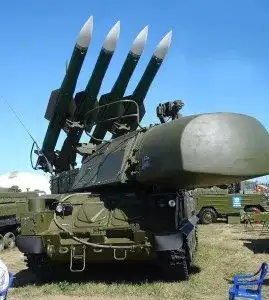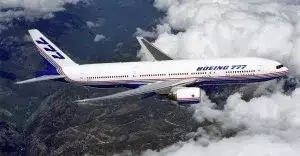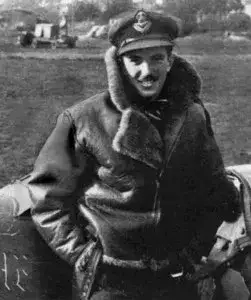What happens when a missile hits an airliner?
July 18, 2023 by Thomas Wictor
Yesterday Russian separatists in the Ukraine shot down Malaysia Airlines Flight 17, killing all 298 people on board. In the comments I read on multiple Websites, readers expressed horror at what the passengers must have experienced. One of the things I try to do is alleviate suffering, so I’d like to explain what happens when a missile hits an airliner. The short answer is that the souls on board—that’s the official air-traffic controller term for passengers and crew—felt nothing.
There are lots of reasons I can make this statement. First, the weapon used was a 9M28M1 surface-to-air-missile (SAM) fired by a Russian SA-11 Buk missile system.
The 9M28M1 is a heat-seeking missile that goes for the engines of an aircraft. Malaysia Airlines Flight 17 was a Boeing 777.
As a heat seeker, the missile would’ve aimed at the rear of one engine, where the hot air was blowing out.
The 9M28M1 has a proximity fuse, a tiny radar system in its nose that tells it when it’s close to the target. The 154-pound warhead detonates about sixty-five feet from the target; the missile doesn’t actually hit the aircraft.
A 9M28M1 warhead can be fragmentary or incendiary. Either would tear a Boeing 777 to pieces in midair. A fragmentary warhead would destroy the engine and control systems; it would also puncture the fuselage and cause explosive decompression.
Fly-by-wire
All modern jet aircraft are fly-by-wire, meaning the controls are connected to a computer. In the past the controls were manual: The stick and rudder pedals were physically connected to the control surfaces by means of cables. It required great physical strength to pilot a high-performance aircraft.
The advantage of fly-by-wire is that the computer makes endless automatic adjustments in addition to the flight crew’s input. This means that aerodynamically unstable aircraft can be built and flown. The downside is that if the computer or the control surfaces fail, the aircraft can become a hurtling fracas in an instant.
If a SAM with a fragmentary warhead damages the control systems of a modern jet airliner, the ship could flip end over end and break apart. On the other hand, if the warhead were incendiary, the fuel tanks in the wings and fuselage would explode, blowing the plane to pieces.
Here’s footage of a Patriot missile hitting target drones—unmanned aircraft. Keep in mind that this is super slow motion, and ignore the awful music.
If an airliner began tumbling like that, the passengers would be immediately knocked out. Also, Flight 17 was cruising at 33,000 feet. It’s guaranteed that the fuselage was punctured by shards from the missile, which means that the souls on board would instantly lose consciousness. They would never know what hit them.
I’ve seen photos and footage of the crash site. The reports are that the wreckage is scattered over ten miles, indicating that the airliner broke apart in midair. Most of the bodies are intact, and very large chunks of wreckage are evident. When an airliner noses into the ground from thousands of feet, there’s almost nothing left.
The impact is similar to this test that involved running an F-4 Phantom jet into a concrete wall at 500 miles per hour.
An aircraft that dives out of the sky is pulverized.
One of the dead from Malaysia Airlines Flight 17 was a young man who’d lost every stitch of clothing, prima facie evidence of an airliner breaking up in midair. This is how fast it would’ve happened. And these are mannequins, by the way.
Due to the combination of the missile’s speed of 1900 miles per hour, the explosive decompression, the altitude, and the human nervous system’s slowness in processing information, I can say to everyone who’s haunted by this atrocity that nobody on Flight 17 knew or felt a thing. They transitioned in a flash. There was no time to feel pain or be afraid.
I’m terrified of flying. If you read Hallucinabulia, you’ll see that there’s a chapter devoted to nightmares I’ve had about being in plane crashes. My fear is that I’d be awake and aware as we took the final plunge. Nothing like that happened to the souls on board Flight 17.
I always found comfort in the poem “High Flight,” by a pilot named John Gillespie Magee Jr. He died in an airplane crash on December 11, 1941, but he left behind a timeless masterpiece.
Oh! I have slipped the surly bonds of earth
And danced the skies on laughter-silvered wings;
Sunward I’ve climbed, and joined the tumbling mirth
Of sun-split clouds—and done a hundred things
You have not dreamed of—wheeled and soared and swung
High in the sunlit silence. Hov’ring there
I’ve chased the shouting wind along, and flung
My eager craft through footless halls of air.
Up, up the long delirious, burning blue,
I’ve topped the windswept heights with easy grace
Where never lark, or even eagle flew—
And, while with silent lifting mind I’ve trod
The high untresspassed sanctity of space,
Put out my hand and touched the face of God.
Another flight-related composition helps me accept terrible loss.
In the skies today we saw destruction and tragedy. Yet farther than we can see there is comfort and hope. In the words of the prophet Isaiah, “Lift your eyes and look to the heavens. Who created all these? He who brings out the starry hosts one by one and calls them each by name. Because of His great power and mighty strength, not one of them is missing.”
The same Creator who names the stars also knows the names of the seven souls we mourn today. The crew of the shuttle Columbia did not return safely to Earth; yet we can pray that all are safely home.
—George W. Bush
I believe that the souls on board Malaysia Airlines Flight 17 are safely home.
This article viewed 545 times.



